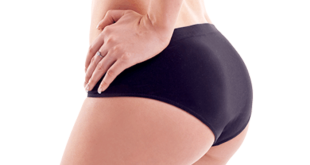Understanding Hidradenitis Suppurativa
HS is classified into three stages, known as Hurley stages:
- Hurley Stage I: Single or multiple abscesses without sinus tracts (tunnels) or scarring.
- Hurley Stage II: Recurrent abscesses with sinus tracts and scarring, with multiple widely spaced lesions.
- Hurley Stage III: Diffuse or near-diffuse involvement with interconnected sinus tracts and abscesses across a large area.
Understanding the stage of your HS is crucial in determining the most appropriate treatment approach.
Consulting a Dermatologist
The first and most important step in choosing the right Hidradenitis Suppurativa treatment is consulting with a dermatologist who has experience treating HS. A specialist can accurately diagnose the stage of your condition, evaluate its severity, and recommend a treatment plan tailored to your specific needs. Dermatologists may also work with other healthcare providers, such as surgeons, endocrinologists, or pain specialists, to manage the various aspects of the condition. This information will help your dermatologist determine the best course of action.
Treatment Options for Hidradenitis Suppurativa
The treatment for Hidradenitis Suppurativa is often multifaceted, involving a combination of medications, lifestyle changes, and possibly surgical interventions. Below are the main categories of treatment options:
- Topical Treatments
Topical treatments are often the first line of defense, especially for mild cases of HS (Hurley Stage I). We apply these treatments directly to the skin and include
- Topical Antibiotics: Medications like clindamycin are commonly prescribed to reduce bacterial load and inflammation. These are typically used in mild cases or as part of a broader treatment regimen.
- Topical Retinoids: Derived from vitamin A, retinoids like tretinoin can help reduce the blockage of hair follicles, a contributing factor in HS flare-ups.
Topical treatments are generally well-tolerated, but their effectiveness may be limited in more advanced stages of HS.
- Oral Medications
For moderate to severe HS (Hurley Stage II and III), oral medications are often necessary. These include:
- Antibiotics: Long-term antibiotic therapy, such as tetracyclines, can help reduce inflammation and bacterial infection. However, prolonged use may lead to antibiotic resistance, so careful monitoring is necessary.
- Hormonal Therapies: For patients whose HS is influenced by hormonal changes, treatments like oral contraceptives or anti-androgen medications (e.g., spironolactone) can be effective.
- Biologics: Biologics, such as adalimumab (Humira), are a newer class of drugs that target specific parts of the immune system to reduce inflammation.
- Immunosuppressants: Drugs like methotrexate or cyclosporine can help reduce immune system activity and inflammation, but they come with potential side effects and require regular monitoring.
- Surgical Interventions
When medications are insufficient or the disease has progressed to a severe stage, doctors may consider surgical options.
- Incision and Drainage: This procedure relieves pain by draining abscesses. However, it is usually a temporary solution, as the lesions often recur.
- Laser Surgery: Carbon dioxide laser surgery can be effective in removing affected tissue and reducing the recurrence of HS lesions.
- Wide Excision: For severe cases, wide excision involves surgically removing the affected skin and tissue.
- Lifestyle Modifications
While medications and surgery are critical components of HS treatment, lifestyle changes can also play a significant role in managing the condition:
- Diet: Some patients find that certain foods, such as dairy or high-glycemic foods, can trigger flare-ups. Keeping a food diary and working with a nutritionist to identify and eliminate potential triggers can be beneficial.
- Weight Management: Obesity is a known risk factor for HS, and maintaining a healthy weight can help reduce the severity and frequency of flare-ups.
- Smoking Cessation: Smoking is associated with HS, and quitting will enhance the overall effectiveness of the treatment plan.
- Hygiene: Keeping the affected areas clean and dry, using antiseptic washes, and wearing loose-fitting clothing can help prevent irritation and infection.
Monitoring and Adjusting Your Treatment Plan
Conclusion
Choosing the right Hidradenitis Suppurativa treatment involves a thorough understanding of the condition, close collaboration with a knowledgeable dermatologist, and a willingness to explore and adapt different therapies. By taking a proactive approach and considering all available options, you can find a treatment plan that effectively manages your symptoms and improves your quality of life.







